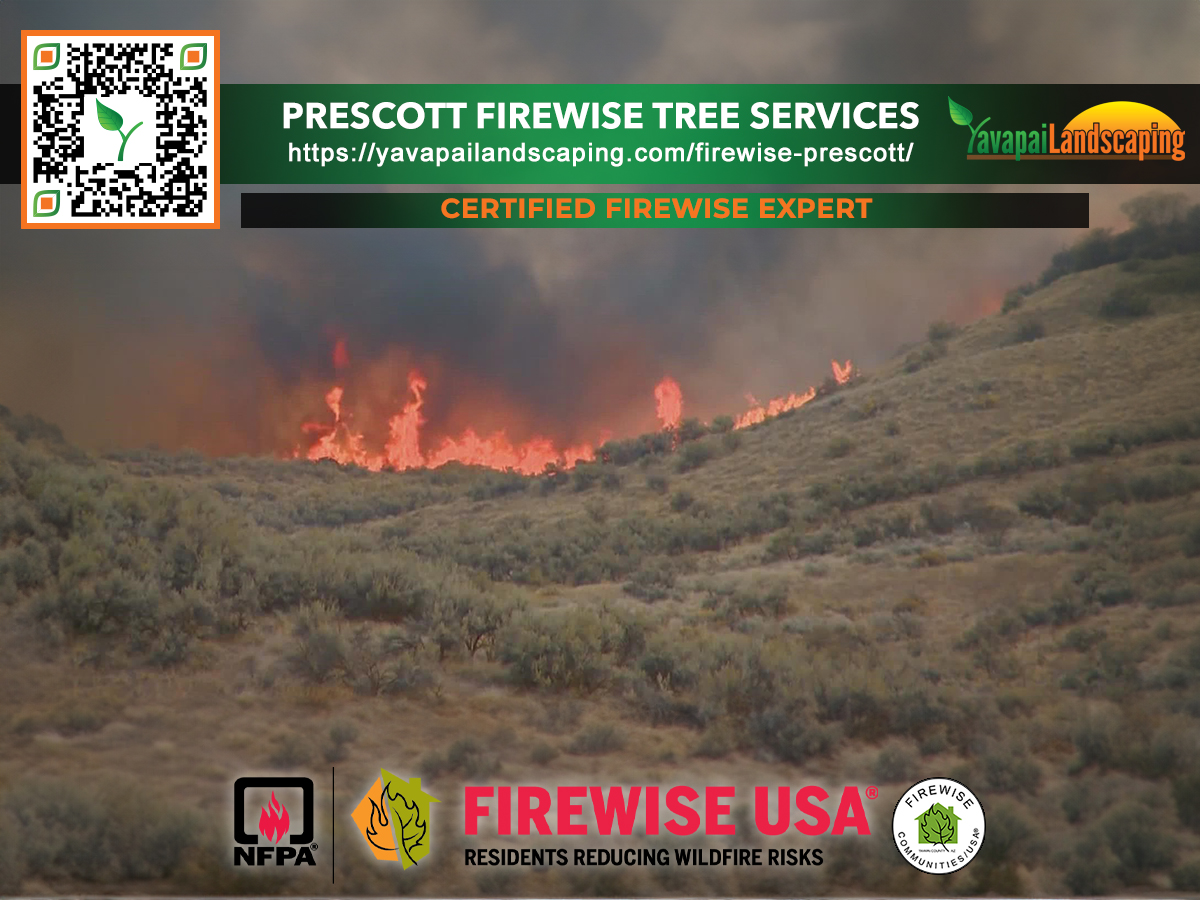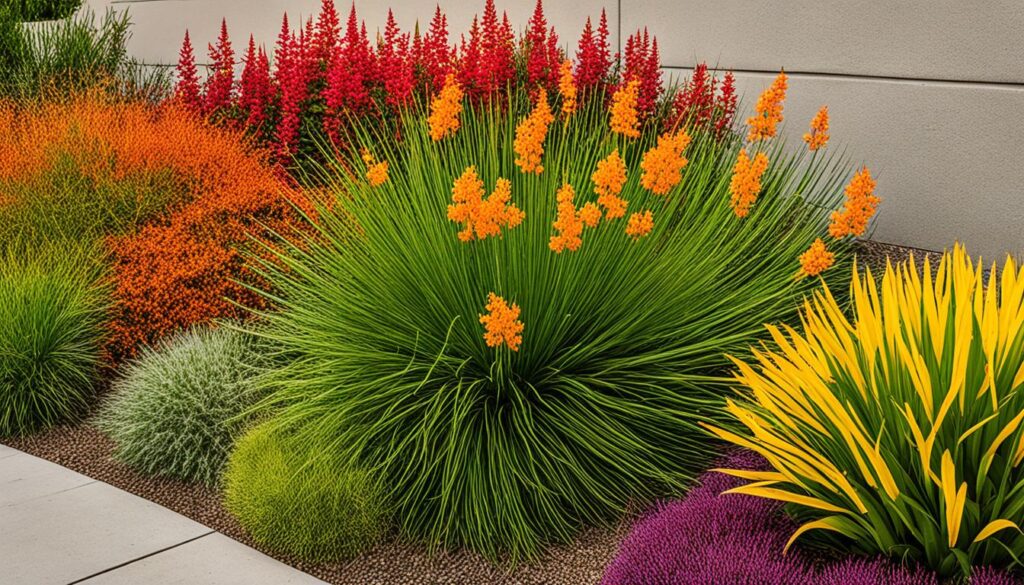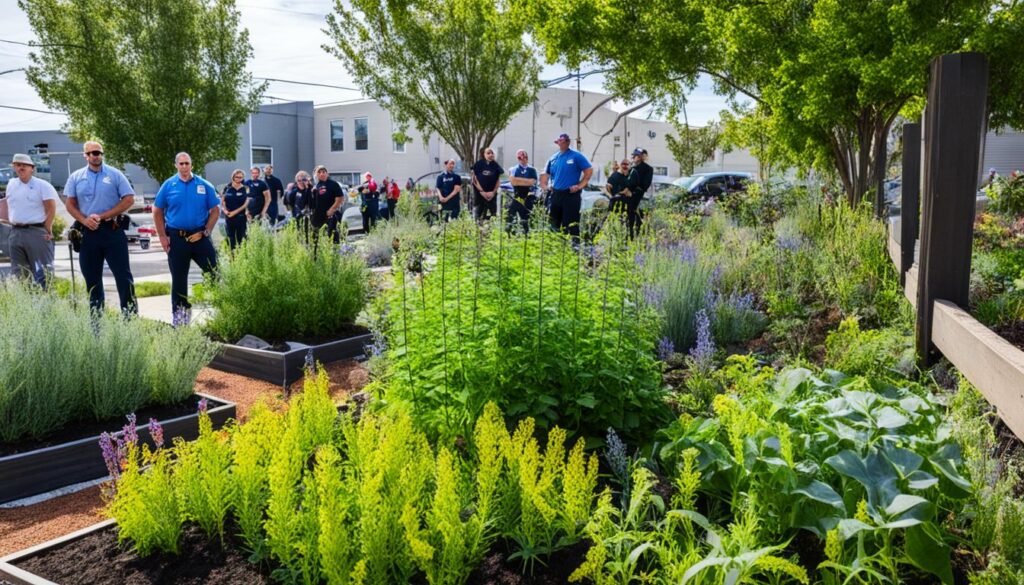
Urban areas face special challenges in preventing wildfires. Using native plants for Firewise landscaping is a smart move for city folks. These tough plants fit well in local conditions, making gardens safer and supporting local wildlife.
Choosing drought-tolerant plants is great for Firewise landscaping. They need less water and have less fuel. Plants native to your area are perfect for this. Think about how they can protect your home.
Firewise landscaping doesn’t mean your garden can’t look good. Many native plants have beautiful flowers and interesting leaves. They make your garden look great and keep it safe from fires.
Key Takeaways
- Native plants are ideal for Firewise urban landscaping
- Fire-resistant species help protect homes from wildfires
- Drought-tolerant plants are often good Firewise choices
- Urban biodiversity benefits from native landscaping
- Firewise gardens can be both safe and attractive

Understanding Firewise Landscaping Principles for Urban Areas
Urban wildfire risk is a big worry in many cities. Firewise landscaping is a smart way to protect homes and communities. It uses plants and designs to make cities safer.
The Importance of Fire-resistant Landscaping in Cities
Cities have special fire risks because of the many people and the few escape paths. Fire-resistant landscaping helps by slowing down fires and saving buildings. It’s important for making cities safe and beautiful.
Its practical benefits and fire-resistant landscaping can also enhance the aesthetic appeal of urban areas. By incorporating drought-tolerant plants, succulents, and fire-resistant trees, cities can create beautiful and sustainable landscapes that reduce fire risk and provide a peaceful oasis for residents and visitors. Moreover, fire-resistant landscaping can also help to reduce the urban heat island effect, mitigate air pollution, and provide habitat for local wildlife. By prioritizing fire-resistant landscaping, cities can create a safer, more sustainable, and more enjoyable environment for everyone.

Key Characteristics of Firewise Plants
Firewise plants have traits that help protect cities from fires:
- High moisture content
- Low oil or resin content
- Compact growth habit
- Drought tolerance
These plants are often native, making them great for easy landscaping. They need less water and care but still protect against fires.
Balancing Fire Safety with Urban Ecosystem Benefits
Firewise landscaping doesn’t mean giving up green spaces. It’s about choosing and placing plants wisely. Using native, fire-resistant plants helps create beautiful, diverse landscapes. These landscapes support local wildlife and lower fire risk. This way, cities can be safer and more resilient.
In addition to selecting fire-resistant plants, it’s also essential to consider the layout and maintenance of the landscape. For instance, plants should be spaced far enough apart to prevent fires from spreading, and flammable materials like dry leaves and branches should be regularly cleared. Furthermore, incorporating fire breaks, such as gravel or stone pathways, can help contain fires and provide a safe escape route. By adopting these firewise landscaping practices, cities can reduce the risk of wildfires and create sustainable, eco-friendly environments that benefit humans and wildlife. Uncover the brilliance of this article by giving it a read.
Firewise Landscaping, Urban Native Plants: Top Choices for City Gardens
Urban gardeners can make their gardens both beautiful and fire-safe with native plants. These plants are perfect for city gardens because they reduce fire risk and do well in urban settings. Let’s look at some top picks for Firewise landscaping in cities.

Trees are key in Firewise urban landscapes. The Red Maple is a great choice because it provides shade, has beautiful fall colors, and is less likely to catch fire. The Flowering Dogwood is also a top pick for its low fire risk and lovely flowers.
For shrubs, the Inkberry Holly is a smart choice. Its thick leaves don’t burn easily. The Smooth Hydrangea is another excellent option, offering lovely flowers and being fire-safe.
- Groundcovers: Creeping Phlox spreads quickly, suppressing weeds and reducing fire risk.
- Perennials: Black-Eyed Susan adds vibrant color while being drought-tolerant and fire-resistant.
- Grasses: Little Bluestem is a low-flammability vegetation that provides year-round interest.
When picking plants, choose drought-tolerant native ones. These plants need less water and care, which is perfect for busy city folks. Using these fire-safe plants, you can make a safe garden that looks great and helps the environment.
Implementing and Maintaining a Firewise Native Plant Landscape
Starting a fire-safe garden in cities means placing plants smartly. Make sure to leave space between plants to stop fires from spreading fast. Keep shrubs and trees away from your house’s walls. This creates a safe area around your home, which is key in Firewise landscaping.
Watering is key to keeping your garden safe. Choose water-efficient gardens with drip irrigation or soaker hoses. These systems water plants at their roots, saving water and keeping plants dry. Trimming plants and removing dead parts is also important to lower fire risks.
Use non-flammable mulch like gravel or crushed stone to keep the soil moist and control weeds. This helps your garden use less water and resist fires better. Keeping up with your Firewise garden is important. Regular checks and updates will keep your garden safe and beautiful over time.
Yavapai Landscaping Prescott offers complimentary estimates for Prescott and its surrounding communities for Landscaping and tree Services. This includes tree removal, trimming, stump grinding, land clearing, storm clean-up, and emergency tree services.
